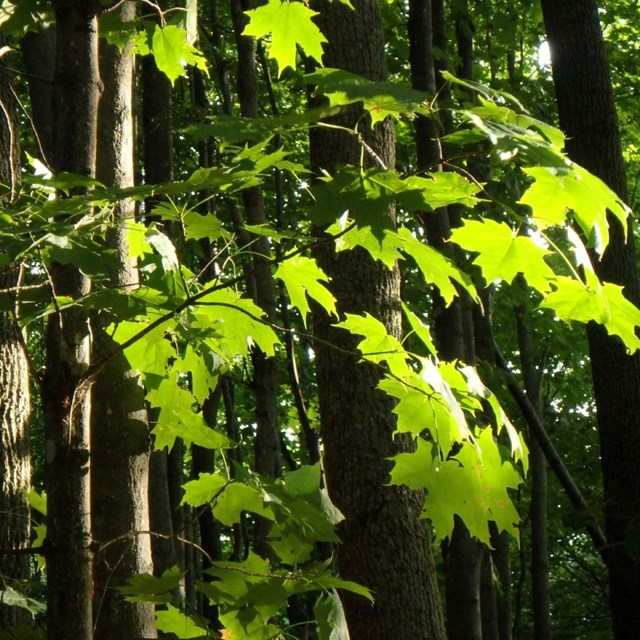|
Sleeping Bear Dunes was established as a National Lakeshore in 1970, but it has a history that stretches back over 12,000 years. Glaciers deposited much of the land here during the last ice age. Since then, these lands have become a mosaic of sand dunes, forests, fields, streams, and lakes. Every location in the Lakeshore is within a few miles of Lake Michigan or another body of freshwater. Our water resources support a vast array of plants, animals, and ecosystems. 
NPS Photo / L. Clark A trained eye will notice the extraordinary number of plants that blanket Sleeping Bear Dunes. Explore our forests and uncover trees, ferns, mosses, and rare wildflowers. Hike through our fields and historic farms to reveal a hidden world of interesting grasses, flowers, and fruit trees. Dive into our streams and lakes to discover secret forests of freshwater plants. Many research projects are conducted in the Park each year so we can better understand our natural resources. This research helps us plan out how we can preserve our natural heritage for future generations to enjoy. View the current research projects. Animals
Plants
|
Last updated: September 6, 2025










